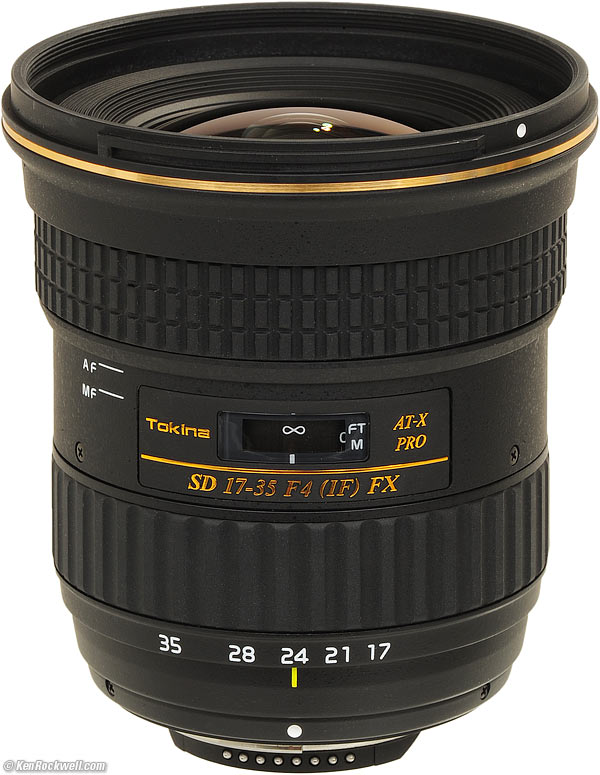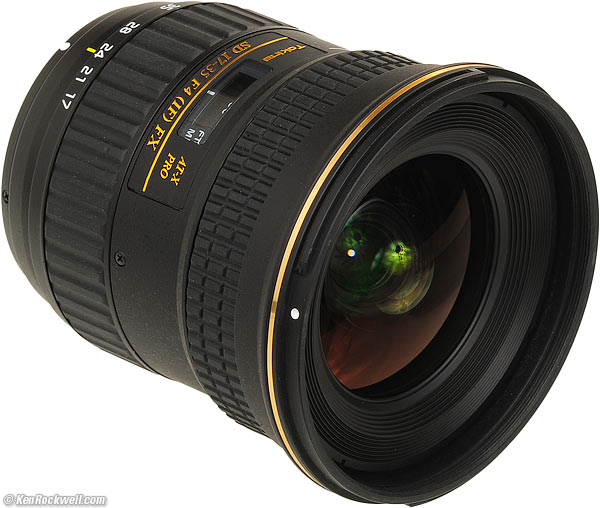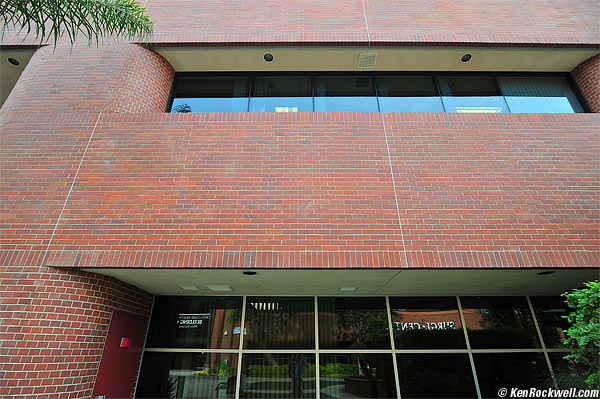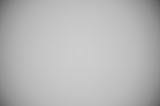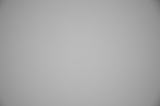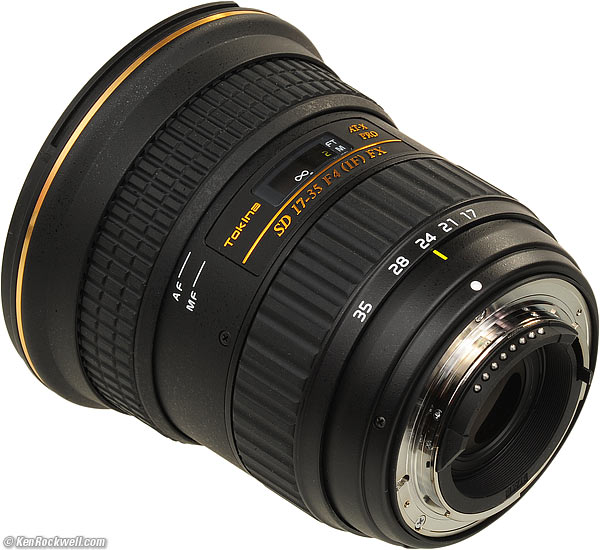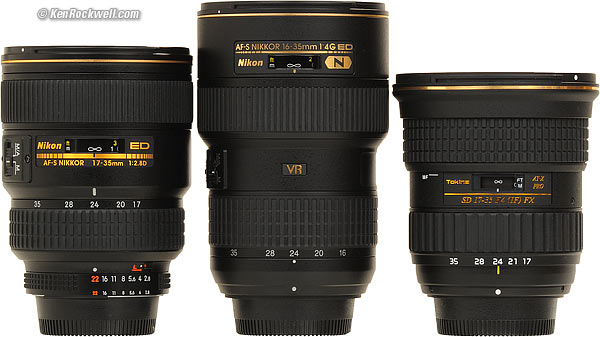Home Donate New Search Gallery Reviews How-To Books Links Workshops About Contact
Tokina 17-35mm f/4
Ultra-Low Distortion AT-X PRO FX
© 2011 KenRockwell.com. All rights reserved.
Intro Specs Performance Compared Recommendations
Tokina 17-35mm f/4 in Nikon mount (82mm filters, 20.9 oz./592g, about $720). enlarge. It also comes in Canon EOS mount. This website's biggest source of support is when you use these links, especially directly to it in Nikon mount at Adorama, Nikon mount at Amazon, Canon EOS mount at Adorama or Canon EOS mount at Amazon when you get anything, regardless of the country in which you live. Thank you! Ken. This is a limited production lens, so if you want one, you'll have to order it and be patient.
11-11-2011 More Tokina Reviews All reviews
Nikon Reviews Nikon Lenses Canon Reviews Canon Lenses
| Optics: | |
| Mechanics: | |
| Ergonomics: | |
| Usefulness: | |
| Availability: | |
| Overall: |
Ideal Uses: Perfect for use on FX digital and 35mm as an ultrawide.
Not for: Won't work on manual-focus cameras. It's foolish to use this on a DX or 1.6x Canon camera; for them, the Tokina 11-16mm — or even a kit lens — is a much smarter idea.
Good: Very low distortion: half the distortion of any other zoom even at triple the price. As sharp as Nikon's professional 17-35mm f/2.8 AF-S, in a smaller, lighter and less expensive package. Also much smaller than Nikon's 16-35mm VR.
Bad: Not as sharp and lacks the VR of Nikon's 16-35mm VR.
Introduction top
Intro Specs Performance Compared Recommendations
Formats and Versions Compatibility
This Tokina 17-35mm f/4 is as sharp as Nikon's professional 17-35mm f/2.8 AF-S.
It's not quite as sharp and lacks the VR of Nikon's 16-35mm VR.
This Tokina lens has much less distortion than any other ultrawide zoom, regardless of price. Unlike any other ultrawide zoom, this Tokina's distortion is invisible at almost every setting. Nikon and Canon's best pro ultrawide zooms have double this distortion!
Considering that this Tokina 17-35mm is smaller and lighter than either of the Nikon lenses, and costs half as much, it's easy to recommend it for all full-frame film and digital cameras.
I haven't yet tested the otherwise identical Canon EOS version, however I'll extrapolate that this Tokina 17-35 is also as good optically as Canon's 17-40mm f/4 L and Canon's top-of-the-line professional16-35mm f/2.8 L II, however since the Canon 17-40mm f/4 L costs about the same, I see no reason to get this Tokina for Canon unless its price drops.
Formats and Versions intro top
This Tokina 17-35mm f/4 comes in both Nikon and Canon EOS mounts. I am addressing the Nikon mount version here; you may make the usual extrapolations for Canon.
This is a full-frame (FX) lens, and I will be testing it as such.
It makes no sense to use this lens on smaller formats; on a D7000 or other small-frame camera, use any 16-85mm or kit lens for better results with a lot less size, weight and expense.
Nikon Version
Everything should work perfectly on every digital Nikon, both FX and DX, and even on Nikon's cheapest digitals like the D40, D40x, D60, D3000, D3100 or D5000.
It also should be perfect on decent or recent AF film cameras like the F6, F100, F5, N80 and N75.
The incompatibilities for older or cheaper film cameras are that:
1.) It won't autofocus with the cheapest new AF 35mm cameras like the N55, but if you focus manually, everything else should work great. Even if you lose autofocus, these cameras have in-finder focus confirmation dots to help you.
2.) Late 1980s ~ early 1990s AF cameras like the N90s, N70 and F4 should autofocus just fine, but you'll lose Manual and Aperture-priority since you have no way to set the aperture on the camera or on the lens.
3.) You're really pushing it with the oldest AF cameras like the N2020, N6006 and N8008. You'll have no AF, and confused exposure modes. Manual focus is fine, with electronic focus indications.
4.) Since it has no aperture ring, it's just about useless with manual focus film cameras. It will shoot every shot at its minimum aperture.
See Nikon Lens Compatibility for details with your camera. Read down the "AF-S, AF-I," and "G" columns for this lens. You'll get the least of all the features displayed in all columns, since "G" (gelding) is a deliberate handicap which removes features.
Warning: as a non-Nikon and non-Canon lens, there is never any guarantee that this Tokina lens will always work perfectly with every possible camera. I've only used it on the Nikon D3 and D7000. There is always the potential for it not to work on some models of camera, today or newer models in the future. This is the chance you take with non-Nikon or non-Canon lenses.
Tokina 17-35mm f/4 FX. enlarge.
Canon Version
The Tokina 17-35mm should work fine on every Canon camera made since 1987.
Specifications top
Intro Specs Performance Compared Recommendations
Tokina calls this the Tokina AT-X 17~35mm F4 PRO FX.
AT-X: Advanced Technology-seX.
F4: f/4.
PRO: Tokina's designation for its lenses with its brilliant AF-MF focus clutch.
FX: Full-frame 35mm.
Tokina claims a "silent DC motor," but that's just a trade name. It most certainly isn't silent.
13 elements in 12 groups.
One of these is aspheric.
Two of these are SD super-low dispersion glass, similar to Nikon's ED glass.
Internal focusing.
Multicoated.
Coverage top
104º - 64.7º on 35mm and FX.
Less on smaller formats.
9 rounded blades.
Stops down to f/22.
Focal Length top
17-35mm.
When used on a Nikon DX camera, it gives angles of view similar to what a 24-53mm lens gives when used on an FX or 35mm camera.
When used on a Canon 1.6x camera, it gives angles of view similar to what a 27-56mm lens gives when used on an FX or 35mm camera.
When used on a Canon 1.3x camera, it gives angles of view similar to what a 22-45mm lens gives when used on an FX or 35mm camera.
0.9 feet (0.28m), marked.
Maximum Reproduction Ratio specs top
1:4.82.
Hard Infinity Focus Stop? specs top
No.
Let the AF system focus for infinity.
Yes.
Depth-of-Field Scale specs top
No.
Infra-Red Focus Index specs top
No.
No.
82mm.
Plastic.
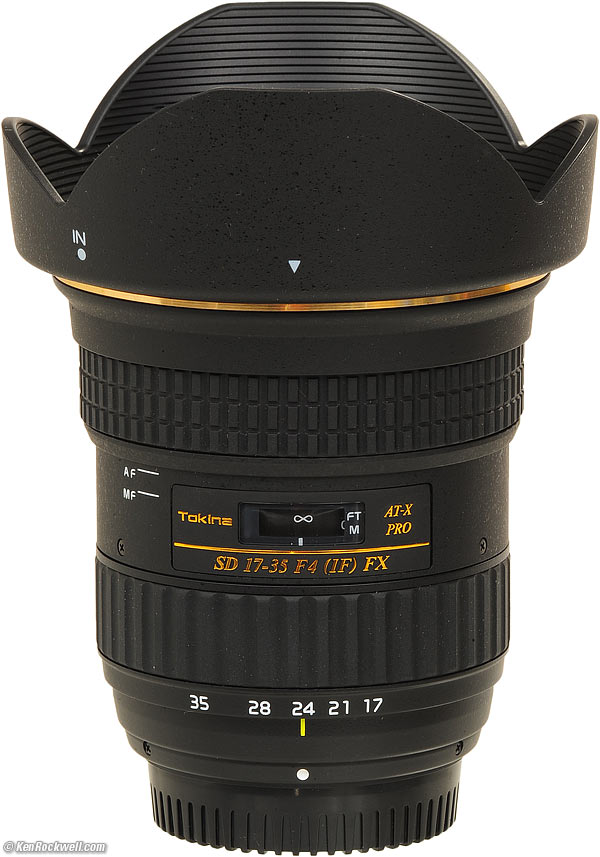
Tokina 17-35/4 with BH-821 hood.
The plastic bayonet BH-821 hood is included.
Tokina specifies 3.7" (94.5mm) long by 3.5" (89mm) diameter.
Nikon version: 20.880 oz. (591.85g), measured.
Tokina specifies 21.1 oz. (600g) for both versions.
None.
Made in Japan.
Serial numbers printed and bar-coded on stickers on both the box and the warranty card.
Three-year USA warranty.
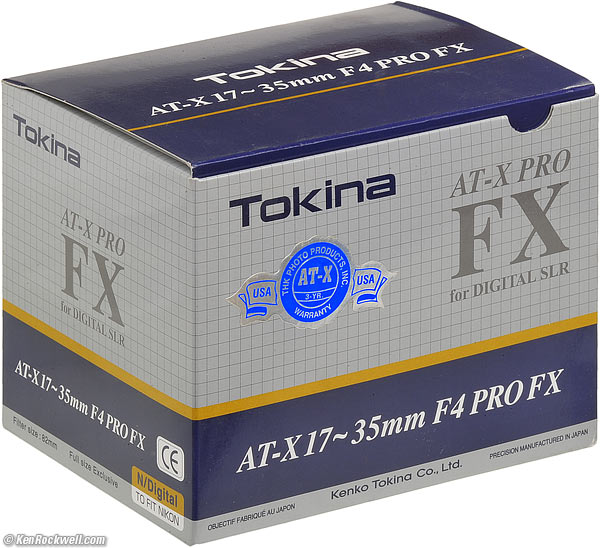
Box, Tokina AT-X 17-35mm f/4 FX.
Single-wall cardboard box, glossy printed.
Folded corrugated cardboard formers inside. Lens in clear plastic bag inside cardboard.
Paperwork on top of cardboard, just under box cover.
Includes hood, big folded instruction sheet and warrantee card.
June 2011 .
November 2011.
Tokina Product Number specs top
Nikon: ATX175PROFXN.
Canon: ATX175PROFXC.
Three Years.
$720, November 2011.
Performance top
Intro Specs Performance Compared Recommendations
Overall Auto and Manual Focus Bokeh Caps Color Coma
Distortion Ergonomics Eyeblow Falloff Filters Flare and Ghosts
Focus Breathing Color Fringes Mechanics
Sharpness Sunstars Survivability
Overall performance top
Nikon
Smaller, lighter and less expensive than the 17-35mm f/2.8 AF-S, and just as sharp.
Not as good as the Nikon 16-35mm VR, but smaller, lighter and less expensive.
Canon
This Tokina 17-35mm f/4 FX ATX should be as good optically as Canon's 17-40mm f/4 L and Canon's top-of-the-line professional16-35mm f/2.8 L II, which are as good as Nikon's 17-35mm f/2.8 AF-S.
However, since the Canon 17-40mm f/4 L costs the same as this Tokina, there's no reason to buy this lens for Canon unless the Tokina's price drops significantly.
Auto and Manual Focus performance top
This Tokina lens has a small internal motor to focus itself.
AF Speed
Autofocus is about as fast as the Nikon 17-35mm f/2.8 AF-S and Nikon 16-35mm VR, however this Tokina lens isn't silent: you can hear its little motor buzzing as it focuses.
AF Accuracy
AF is perfect at every focal length on my Nikon D3.
AF Noise
This Tokina has a much noisier AF motor than the Silent Wave Motor of Nikon's lenses.
It is not a Silent Motor as in Canon and Nikon lenses. This Tokina sounds like it has a regular electric motor in it, like from a toy car.
Manual Focus
Manual focus is great; just pull the focus ring towards you and go!
It turns in the correct direction, something Sigma lenses often do not.
Bokeh performance top
Bokeh is rarely visible with ultrawide lenses, since very few things ever get out-of-focus.
Bokeh is the character of out of focus areas, not simply how far out of focus they are.
If you can see the bokeh, which you only will at the 35mm end and with very close subjects so that the background is thrown out of focus, bokeh is very good.
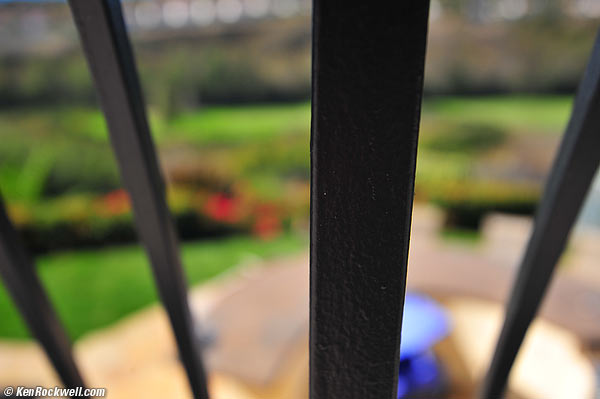
Focused at 1 foot at 35mm at f/4: smooth backgrounds.
Caps performance top
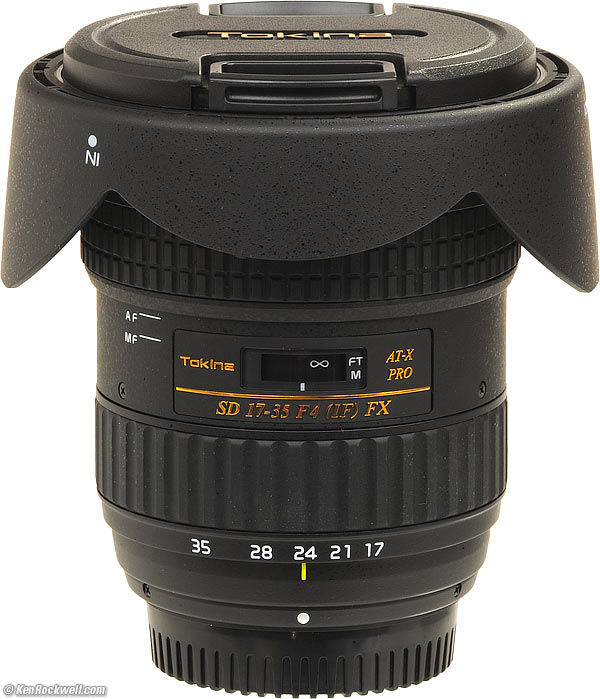
Capped Tokina 17-35mm f/4.
The front cap is Tokina's usual excellent pinch-type cap, almost as good as Nikon's and far better than Canon's front caps.
The rear cap is Tokina's usual; it's just fine.
Color Rendition performance top
Color rendition appears identical to my NIKKOR lenses.
Coma performance top
There is almost no coma wide-open at 17mm, although the corners do get smeary. There isn't any coma at 24mm and 35mm.
Coma is weird smeared blobs that appear around bright points of light in the corners. It's not a problem with this lens.
See also sagittal coma flare.
Distortion performance top
The Tokina 17-35mm f/4 FX has far less distortion than any other ultrawide zoom.
In fact, it has only about half the distortion of any other similar lens, even at triple the price. The Nikon 16-35mm VR has four times the distortion at 16mm!
The Tokina 17-35mm's distortion is invisible, except possibly for some minor barrel distortion only at 17mm. Here's how it looks at its worst:
Distortion at 17mm, Tokina 17-35mm f/4 FX. enlarge.
For more critical use, plug these figures into Photoshop's lens distortion filter. These aren't facts or specifications, they are the results of my research that requires hours of photography and calculations on the resulting data.
FX and Film at 3m (10') |
|
17mm |
+2.0 |
21mm |
+0.5 |
24mm |
-0.5 |
28mm |
-1.0 |
35mm |
-1.1 |
© 2010 KenRockwell.com. All rights reserved.
Even better than suggested by these low numbers is that the distortion is all first-order, making it trivial to correct completely in Photoshop's lens distortion filter.
Ergonomics performance top
Tokina 17-35mm f/4 FX. enlarge.
Ergonomics are swell.
The first thing you'll notice is that the zoom ring is very stiffly damped. It wants two fingers to adjust, unlike Nikon's 17-35mm f/2.8 AF-S which can be zoomed with just one finger.
The metal focus ring works great; push away for AF and pull towards you for manual focus switching.
This is a tight, tough little lens. The wide front keeps your fingers out of the picture.
Eyeblow performance top
As some zoom lenses zoom in and out, air can pump in and out, and can blow out of a camera eyepiece.
This Tokina has no eyeblow; its front doesn't pump in and out enough to move enough air. This is good.
Falloff (darkened corners) performance top
Falloff on FX is somewhat visible wide open at 17mm, and goes away otherwise.
It will be even less of an issue on DX (see crop factor).
I've exaggerated this by shooting a gray field and placing these on a gray background:
Tokina 17-35mm f/4 FX falloff on FX and film, no correction, Nikon.
© 2011 KenRockwell.com. All rights reserved.
|
Filters, Use with performance top
Look out: 82mm filters are uncommon and expensive.
A 6mm-thick UV filter worked fine, as did an 82mm Tiffen digital HT ND 0.6 grad in rotating mount — but watch it: these filters almost vignette and anything thicker would cause vignetting at 17mm on full-frame.
Don't use a polarizer on any 17mm lens.
Flare and Ghosts performance top
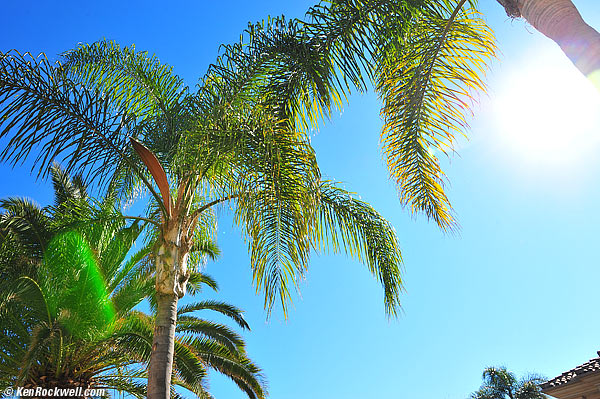
Flare and Ghosts at 27mm at f/8.
If you point it straight into the sun, overexpose and put something dark against which you can see ghosts in the other corner, it's easy to get some green blobs opposite the sun.
These are never a problem for normal use, but if they bother you, camera-brand lenses are better.
Focus Breathing performance top
Of interest mostly to cinematographers focusing back and forth between two subjects, for instance, a couple having a conversation, the image from the Tokina 17-35/4 gets slightly smaller as focused more closely.
Lateral Color Fringes performance top
Nikon
There are no lateral color fringes on the D3, which corrects them automatically.
Canon
Haven't tried yet.
Mechanics performance top
Rear, Tokina 17-35mm f/4, Nikon mount. enlarge.
This Tokina is a tough, well-made lens. It seems like it will take quite a beating; what plastic there is is very tough.
Hood
Plastic.
Filter Threads
Plastic.
Hood Mount
Plastic.
Fore Barrel
Plastic.
Focus Ring
Metal; rubber covered.
Mid and Aft Barrel Exterior
Plastic.
Zoom Ring
Plastic; rubber covered.
Internals
Metal and plastic.
Mount
Metal.
Markings
Paint.
Identity Plate
Black and gold debossed metal plate, with clear plastic window for focus scale.
Serial Number
Serial number is printed on a glued-on sticker on the bottom rear of barrel
Moisture Seal at Mount
Yes.
Noises When Shaken
Lots of clicking and clunking.
Made in
Japan.
Sharpness performance top
Warning 1: Image sharpness depends more on you than your lens.
Warning 2: Lens sharpness doesn't mean much to good photographers.
The Tokina 17-35mm f/4 is as sharp as Nikon's professional 17-35mm f/2.8 AF-S that costs more than twice as much.
It's not as sharp as Nikon's 16-35mm VR, but no other SLR zoom lens is, either.
This Tokina is blurrier in the corners of FX at 17mm at f/4, just like Nikon's 17-35mm. Both these lenses get sharper in the corners as stopped down, and are sharp at 17mm throughout most of the image, even at f/4.
At 24mm, this Tokina lens is sharp corner-to-corner on FX even at f/4, which is better than the Nikon 17-35mm.
At 35mm, this Tokina is slightly softer at f/4 throughout the frame, and super-sharp from f/5.6 on.
Sunstars performance top
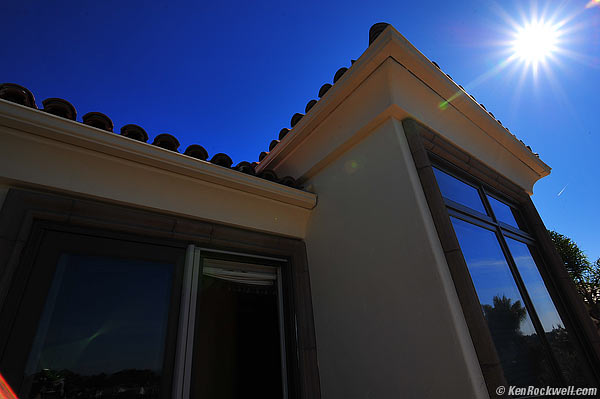
Sunstar, Tokina 17-35 at f/11.
With its slightly rounded 9-bladed diaphragm, this Tokina 17-35 makes somewhat softer 18-pointed sunstars.
Survivability performance top
The Tokina 17-35mm f/4 seems pretty tough. So long as you don't hit the recessed glass, I doubt you can kill it.
The exterior is a solid barrel, inside of which the lens elements move in and out. Pop on a filter, and it's invincible because the barrel never moves.
The AF motor can die, and I'm unsure how much luck you'll have getting it serviced in 20 or 30 years.
Compared top
Intro Specs Performance Compared Recommendations
Nikon 17-35/2.8, 16-35mm VR and Tokina 17-35mm f/4. enlarge.
As I've said before, this Tokina is the smallest and lightest current ultrawide full-frame zoom, it's as sharp as most other professional ultrawide zooms, and has the lowest distortion of any of them at any price.
If I had to find something it can't do as well as one other lens, the Nikon 16-35mm VR is sharper and does have VR, but the 16-35 VR has much more distortion.
Versus Tokina
| Introduced | 2011 |
2010 |
1990s |
1990s |
| Filter Size | 82mm |
none |
77mm |
77mm |
| Filter Threads | plastic |
none |
Metal |
Metal |
| Distortion (W~T) | ||||
| Diaphragm Blades | 9 rounded |
9 rounded |
6 |
9 |
| Sunstars | 18 soft points |
18 soft points |
6 points |
18 points |
| Focus | motor |
motor |
screw |
screw |
| Instant manual-focus override? | no |
no |
no |
no |
| AF/MF switch | pull ring |
pull ring |
move camera switch |
pull ring |
| Weight | 592g |
946g |
504g |
601g |
| Made in | Japan |
Japan |
Japan |
Japan |
| Price, 11/2011 | $100 used |
$300 used |
Versus Nikon
| Introduced | 2011 |
1999 |
2010 |
2000 |
1993 |
| Filter Size | 82mm |
77mm |
77mm |
77mm |
77mm |
| Filter Threads | plastic |
Metal |
plastic |
plastic |
Metal |
| Distortion (W~T) | |||||
| Diaphragm Blades | 9 rounded |
9 rounded |
9 rounded |
7 |
9 |
| Sunstars | 18 soft points |
18 soft points |
18 soft points |
14 points |
18 points |
| Focus | motor |
AF-S SWM |
AF-S SWM |
screw |
screw |
| Instant manual-focus override? | no |
Yes |
Yes |
no |
no |
| AF/MF switch | pull ring |
slide switch |
slide switch |
on camera |
locking ring |
| Weight | 592g |
730g |
678g |
370g |
588g |
| Made in | Japan |
Japan |
Thailand |
Japan |
Japan |
| Price, 11/2011 | $700 used |
Versus Canon
| Anni | 1993-2007 |
1989-1995 |
2003- |
2007- |
2001-2007 |
2011- |
| Maximum Aperture | f/3.5-4.5 |
f/2.8 |
f/4 |
f/2.8 |
f/2.8 |
f/4 |
| Filter Size | 77mm |
72mm |
77mm |
82mm |
77mm |
82mm |
| Filter Threads | plastic |
Metal |
plastic |
Metal |
Metal |
plastic |
| Length | 69mm |
89mm |
97mm |
112mm |
103mm |
94.5mm |
| Distortion (W~T) | ||||||
| Diaphragm Blades | 5 |
6 |
7 |
7 |
7 |
9 rounded |
| Sunstars | 10 points |
6 points |
14 points |
14 points |
14 points |
18 soft points |
| Focus | USM |
motor |
USM |
USM |
USM |
motor |
| Instant manual-focus override? | Yes |
no |
Yes |
Yes |
Yes |
no |
| AF/MF switch | slide switch |
slide switch |
slide switch |
slide switch |
slide switch |
pull ring |
| Weight | 331g |
549g |
474g |
634g |
599g |
592g |
| Made in | Japan |
Japan |
Japan |
Japan |
Japan |
Japan |
| Price, 1/2012 | $200 used |
$600 used |
$1,000 used |
Recommendations top
Intro Specs Performance Compared Recommendations
This Tokina has less distortion than any other ultrawide zoom, it's built tough, and it's as sharp as Nikon's and Canon's professional lenses.
If you've found the effort I put into researching and sharing all this information for free, this website's biggest source of support is when you use these links, especially directly to it in Nikon mount at Adorama, Nikon mount at Amazon, Canon EOS mount at Adorama or Canon EOS mount at Amazon when you get anything, regardless of the country in which you live. Thank you! Ken. This is a limited production lens, so if you want one, you'll have to order it and be patient.
Specifically for Nikon
This Tokina 17-35mm f/4 FX is a great choice if you don't want to buy — or to carry — Nikon's superior (but not professional) 16-35 VR. The 16-35 VR is sharper and adds VR, which makes it my personal choice, even if it has a lot more easy-to-correct distortion.
Nikon's 18-35 is a sleeper here and I haven't mentioned it except in the comparison table above. It costs less than the Tokina and is about as sharp, but it has a lot more distortion and is built much less tough. It also weighs a lot less than any of the other lenses for Nikon.
Pros still pay $1,770 for Nikon's 17-35/2.8 because it's tough and because it has instant manual-focus override. If you're not shooting it every day for a living, sure, this Tokina is excellent!
Specifically for Canon
With Canon, our choice is easy: Tokina's lens is nice, but since the genuine Canon 17-40 L sells for about the same price, I wouldn't bother with this Tokina for Canon unless its price comes way down – or if you really need the lowest possible distortion.
Help me help you top
I support my growing family through this website, as crazy as it might seem.
The biggest help is when you use any of these links to Adorama, Amazon, eBay, Ritz, Calumet, J&R and ScanCafe when you get anything, regardless of the country in which you live. It costs you nothing, and is this site's, and thus my family's, biggest source of support. These places have the best prices and service, which is why I've used them since before this website existed. I recommend them all personally.
If you find this page as helpful as a book you might have had to buy or a workshop you may have had to take, feel free to help me continue helping everyone.
If you've gotten your gear through one of my links or helped otherwise, you're family. It's great people like you who allow me to keep adding to this site full-time. Thanks!
If you haven't helped yet, please do, and consider helping me with a gift of $5.00.
As this page is copyrighted and formally registered, it is unlawful to make copies, especially in the form of printouts for personal use. If you wish to make a printout for personal use, you are granted one-time permission only if you PayPal me $5.00 per printout or part thereof. Thank you!
Thanks for reading!
Mr. & Mrs. Ken Rockwell, Ryan and Katie.
Home Donate New Search Gallery Reviews How-To Books Links Workshops About Contact

